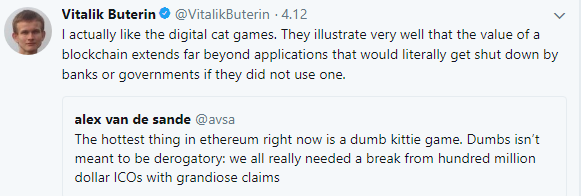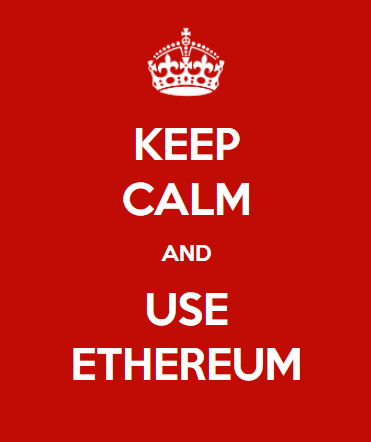How Kitten made Ethereum Cry...........

For several days we witness clogging of the Ethereum Nerwork
All because Kittens
Price for transfer increased 10x and almost all blocks are utilyze in near 100%
Biggest on-blockchain-exchange increased gas price over 6 times to be able to operate (from 4 to 25)
still it is only second larders gas burner
Two related to the Kittens contracts:
0x06012c8cf97bead5deae237070f9587f8e7a266d
0xb1690c08e213a35ed9bab7b318de14420fb57d8c
Makes in total more than 16% of load
Bloomberg Laughts at Ethereum
digital evangelists have preached how the ethereum network will be perfect for applications such as managing supply chains and securities sales. What it’s actually used for is buying kittens
Does it mean that Ethereum failed?
That it is project not worth attention if one app can clogg it?
Current maximum throughput of ethereum network is approx 20 transactions per second (6,7 mln gas every 15 sec - which for the price of 21000 gas of a single transaction gives mentioned number)
It is 3 times more than bitcoin, but.... approximately 1500 times less than Visa/Mastercard
Should that fact make Vitalik Buterin sad?
If You see his instagram he do noot look sad...

He knows better than anybody else that Ethereum is still in early adoption stage and its capabilities need to be increased. But can they be?
Yes they can and there is many ways to do this (and they can be combined as well)
First possibility is To implement Proof of Stake instead of Proof of Work,
currently security of a network is provided by 86 TH of hashing power, that millions of nodes computing exacly the same transactions (and tons of other dumb stuff) to make network secured.
In Proof of Work the security of a network is provided by forcing network to make lots of computation to release new block, so nobody can easily rewrite a block to counterfeit it.
In proof of stake situation is very different. And best description how transactions are valideted is that (I believe Vitalik Buderin is an author, but I'm not sure)
Each participant only gets $1 if they sign the transaction history that most of the participants sign in the end.
And if you sign one page and later sign a different page, your house burns down.
so security is provided not by lots of computation but by putting miners money at risk (if they lie).
Under that model much more transactions can be confirmed.
Another solution to the problem is in the sidechains.
Before I explain what that is I want to point out some viry unusual property of almost every blockchain.
The level of defence before the attacker trying to steal our money is exacly the same for attack where 1$ is at stake that where 100 mln $ are at stake. 84TH/ of hasting power (~ 500 000 best graphics cards) secures every transaction
It would be wiser if security was different depending on the value of transaction It could be heaper then as well (you wold need to pay only for fraction of a hashing power)
That's what sidechains can be useful for .
Sidechain is a blockchain which can exchange information with a main chain in the way that if needed both chains will be consistent
You can do all transactions on a sidechain (with much lower hashrate and security and cost. Then commit to the main chain only a hash of a block from the sidechain ensuring that nobody will be able to counterfeit transactions in a side chain without being noticed. If such event happened any honest node can recover chain from a backup since its honesty can be verified by compering hashes of repaired blocks with mainchain.
That is how You can scale transactions count up (lowering security level for some of them)
There are many more (complicated) ways to scale Ethereum Network Up. And they will come.
Ethereum is still in early stage. So.

In the 1930s, two Russian biologists discovered that color change in Siamese kittens depend on their body temperature. Siamese cats carry albino genes that work only when the body temperature is above 98° F. If these kittens are left in a very warm room, their points won’t darken and they will stay a creamy white.
The oldest cat to give birth was Kitty who, at the age of 30, gave birth to two kittens. During her life, she gave birth to 218 kittens.
Not every cat gets \high\" from catnip. Whether or not a cat responds to it depends upon a recessive gene: no gene"
A cat called Dusty has the known record for the most kittens. She had more than 420 kittens in her lifetime.